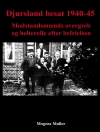This book aims to address a neglected field of research by providing evidence-based insights into how contemporary visitors of different national and generational background, especially those of Polish and Jewish descent, experience and reflect on their visits, or on living in the proximity of different sites of memory across Poland, including former concentration and death camps, ghetto sites, and other physical sites such as museums with a connection to the Holocaust.
表中的内容
1. Introduction: Public Engagement with Holocaust memory sites in Poland.- 2. POLIN’s Museum on Wheels in rural Poland: travelling museum and localised interests of visitors.- 3. Say it with a Flower? POLIN’s Daffodils Campaign.- 4. Performative Engagements with Loss: Healing Rituals at the Borderland Foundation in Senjy, and the Grodzka Gate – NN Theatre Centre in Lublin.- 5. IDF soldiers’ visits to World War II extermination camps in Poland – the experience and its effects on soldiers’ attitudes.- 6. Block 27 and the Possibilities of Sound: Affect, History, and the Creating the Space “In-Between”.- 7. Commemoration Boundaries, Holocaust Memory Limits:Experiences of Proximity, Absence, and Anachrony in the Chełmno on Ner Museum.- 8. The KL Plaszow Site and Its Visitors: Shaping Attitudes towards the Commemoration of the Site.- 9. Familial Memory Activism and Transgenerational Experiences of Visiting Sobibór Death Camp: A Case Study
关于作者
Diana I. Popescu is Honorary Research Fellow at Birkbeck, University of London, UK.












